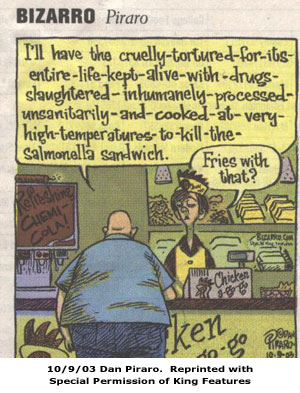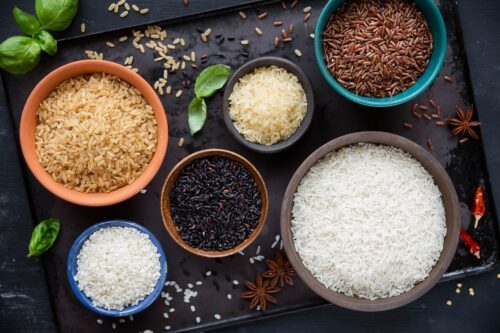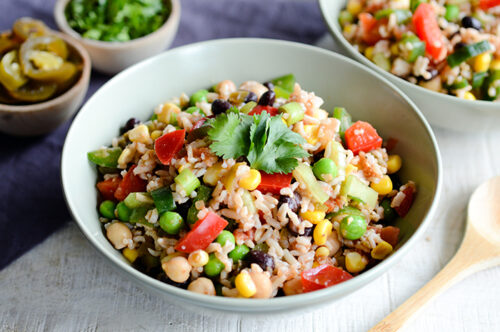The Myth About Meat: What You Really Need to Know
The Myth About Meat: What You Really Need to Know

Meat is ideal nutrition for my body, I once thought – after all, my own body is made of meat – like muscles, liver, kidneys, brain, and associated, more-or-less, edible substances, like fat, blood vessels, lymph nodes, tendons, nerves, bone, skin, etc. Most of my friends still believe meat is essential for vigorous health and they don’t hesitate to tell me so. I hear too often, “McDougall, if you ate a few more Tri-tips (a popular cut of beef) you’d be stronger, and be able to windsurf longer.” I answer, “For these benefits, do I have to eat the blood vessels, too?” They’re left speechless.
Everyone Knows Meat is a Serious Health Hazard
With very few exceptions, everyone clearly understands that eating meat is damaging to our health. Notice the reaction when you order a vegetarian meal. People will say, “I know, I should have ordered that” and “I usually eat vegetarian.” Or worse, they become defensive, explaining, “I could never live without my meat. Life would be so boring.” And I freely admit, life on a meat-based diet is pretty exciting – you never know what new pain or failed body part will turn up next.
The hazards of meat are so well known they make the material for jokes:
This Bizarro cartoon would not be funny if these important issues were not widely recognized and understood. Yet knowledge in this case fails to result in a call to action for most people.
Possibly having better knowledge of the damaging details would make a difference for some people. The following chart provides a summary of the problems with meat, and at the end of this article I have expanded the discussion on each of these points for you.
| Quality | Health Problems |
| High calorie | obesity, diabetes, heart disease, cancer |
| High fat | obesity, cancer, and diabetes |
| High in saturated fat | heart attacks and strokes |
| Deficient in essential fats | degenerative diseases, multiple sclerosis |
| High protein | osteoporosis, kidney damage and stones |
| High in acid | osteoporosis, kidney stones |
| High cholesterol | atherosclerosis (strokes, heart attacks) |
| High in iron | atherosclerosis (strokes, heart attacks) |
| No dietary fiber | constipation, hemorrhoids, IBS |
| No carbohydrate | fatigue, poor endurance |
| No vitamin C | poor tissue healing (scurvy) |
| No calcium | poor tissues, but needs are very small |
| Environmental contaminants | cancer, Parkinson’s disease, brain damage |
| Carcinogens from cooking | cancer |
| Multiple microbe infections | infectious disease (E. coli to mad cow) |
By now I hope I’ve convinced you that all types of meat – even fish (for more information see the February 2003 – “Fish is Not Health Food,” and the July 2003 – “Meat in the Human Diet,” Newsletters) – are not nutritionally necessary, and short and long-term consumption can result in a wide variety of diseases that commonly afflict people following Western diets. But I know that old habits are hard to break, and that pressures from family and friends can be very powerful. As a doctor I feel obliged to teach you the best. When you tell me you don’t want lung cancer and ask me how many cigarettes you should smoke, I have only one answer for you – none. If you have had a heart attack and don’t want another one, when you ask me how much meat (cholesterol and fat) you should eat, I have only one answer. However, this is not an all or nothing approach, so you can expect improvements even with a shift toward more starches, vegetables, and fruits.
Recommended Articles

How to Cook Beans

How to Cook Rice






